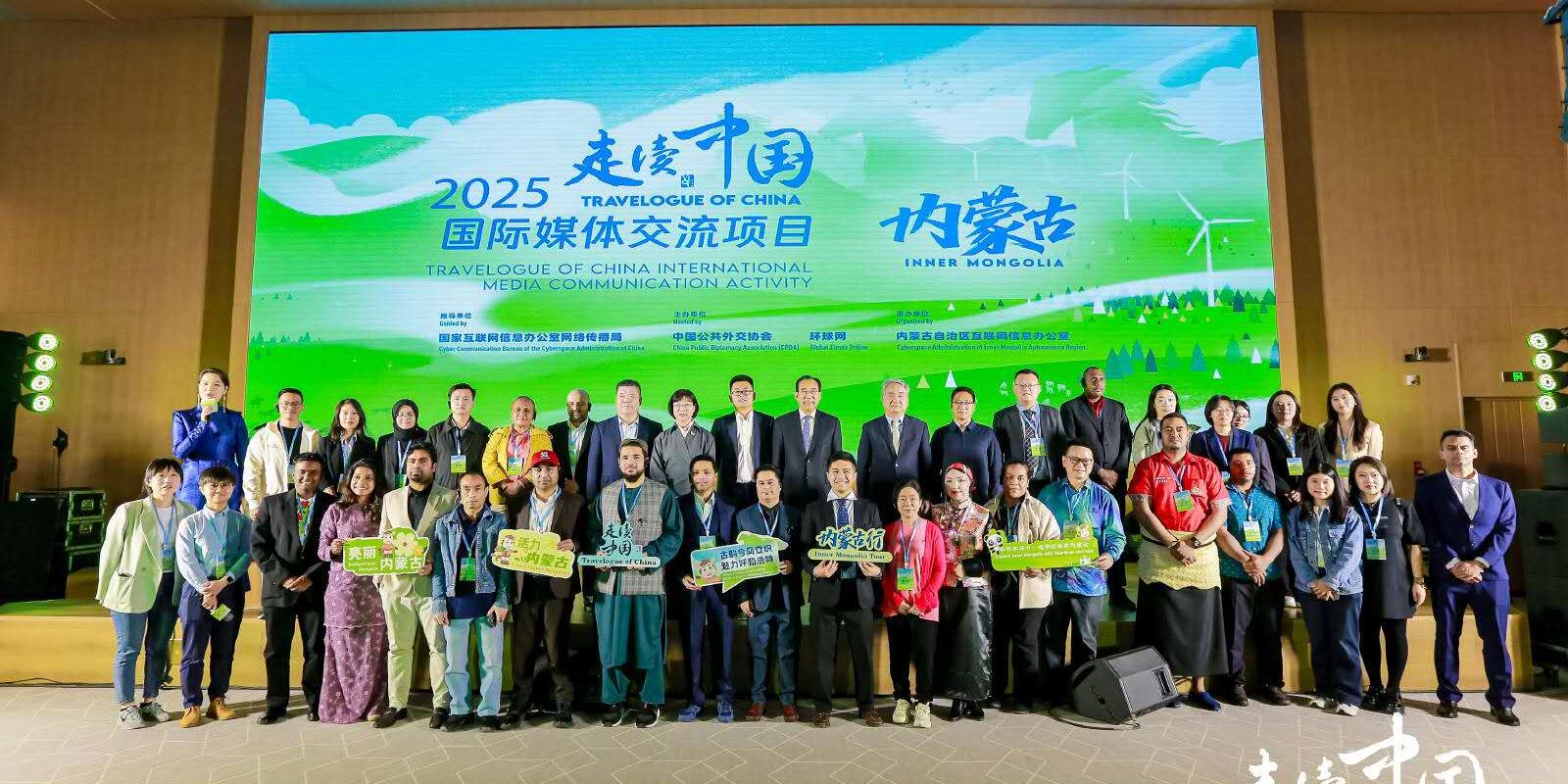CHINA’S autonomous region of Inner Mongolia is making scientific and technological breakthroughs in dairy and intelligent computing, injecting strong momentum into its economic development and industrial advancement, Inner Mongolia’s Director of Cyberspace Administration, Li Peiyan said.
“Inner Mongolia is breaking through resource constraints through scientific and technological innovation, reshaping its industrial landscape through green development, and activating cultural values through the integration of culture and tourism,” Li added.
Inner Mongolia is demonstrating the strong momentum of a “Northern Frontier Model” on the path of high-quality development towards “blazing new trails and advancing to the mid-tier,” she told international journalists at the launch of the 2025 Travelogue of China for International Media and Communication Activity in Hohhot City last week.
Li said with a long and profound history, diverse ecosystems, abundant resources and colorful culture, the 24 million people of all ethnic groups in Inner Mongolia stand together and support each other, painting a new picture of high-quality development that prioritizes ecology and green growth in the new era.
“The region is boosting industrial transformation through scientific and technological innovation.
“In recent years, Inner Mongolia has made initial progress in its scientific and technological breakthrough, advancing 36 key tasks in five fields, achieving remarkable results in dairy and intelligent computing power, injecting strong momentum into regional economic development and industrial upgrading.
“The National Center of Technology Innovation for Dairy where we are now, brings together 106 member units and a research team of over 5,000 people, creating five global firsts, three global leading, and two first national technical achievements.
“The Heringeer New Area and Ulanqab Big Data Center Park, where you will visit and investigate during this event, are among the eight national hub nodes of the integrated computing power network in China.”
She said the “East Data into West for Computing” and “Direct Green Power Supply” have become new business cards for Inner Mongolia’s digital and green development.”
“Currently, the server installation capacity of Heringeer New Area in Hohhot has exceeded 1.5 million units, with a total computing power of 24,000 P, of which intelligent computing power accounts for 91 per cent.
“Ulanqab City has launched 36 data centers, including 32 intelligent computing centers with a total computing power of 40,000 P and intelligent computing power accounting for over 70 per cent,” Li added.
Li said the region is empowering new-quality production through green development, unswervingly following the path of ecological priority and green development and achieving remarkable results in promoting green industrial development and making major breakthroughs in multiple key areas.
“The new energy industry is booming, leveraging its advantages of “wind and solar resources overhead, coal beneath the ground, and power grids in hand,” with wind and photovoltaic installed capacity and power generation ranking first in China.”
She said the green industrial system is gradually improving, and relying on “local seed source protection” and “ecological big data navigation,” the National Grassland Technology Innovation Center is actively building an integrated industrial system for “protection, breeding, propagation, and promoting local seed sources with a cumulative restoration of nearly 33 million mu of grasslands, mines, deserts, saline-alkali lands, and other ecological types.
Li said this has opened up new ideas for green transformation, seized the strategic opportunity of the “double carbon” goal, and created five industrial clusters of “wind, solar, hydrogen, storage and vehicles,” exploring new paths for the green and low-carbon transformation of resource-based cities.
She said Inner Mongolia is activating cultural vitality through the integration of culture and tourism and actively promotes the integrated development of culture and tourism, shaping tourism with culture and showcasing culture through tourism, she added.
“As early as the Paleolithic Age, ancient ancestors lived in Inner Mongolia. The Dayao Culture, Salawusu Culture, and Jinsitai Culture have continued from over 500,000 years ago to 10,000 years ago, and the Hongshan Culture entered the primary stage of civilization 5,000 years ago.
“Multiple ethnic minority groups have thrived on this vast land, creating a “frontier” where agricultural and nomadic civilizations intersect and forming a hotbed for the gathering, exchanges, communication, and integration of multiple ethnic groups.”
Li said in recent years, grassland self-driving tours have remained popular, ice and snow tourism has heated up, and rural tourism has flourished. Inner Mongolia is becoming an ideal destination for self-driving, camping, vacation, and wellness tourism.
By DELI-SHARON OSO
In Beijing, China









